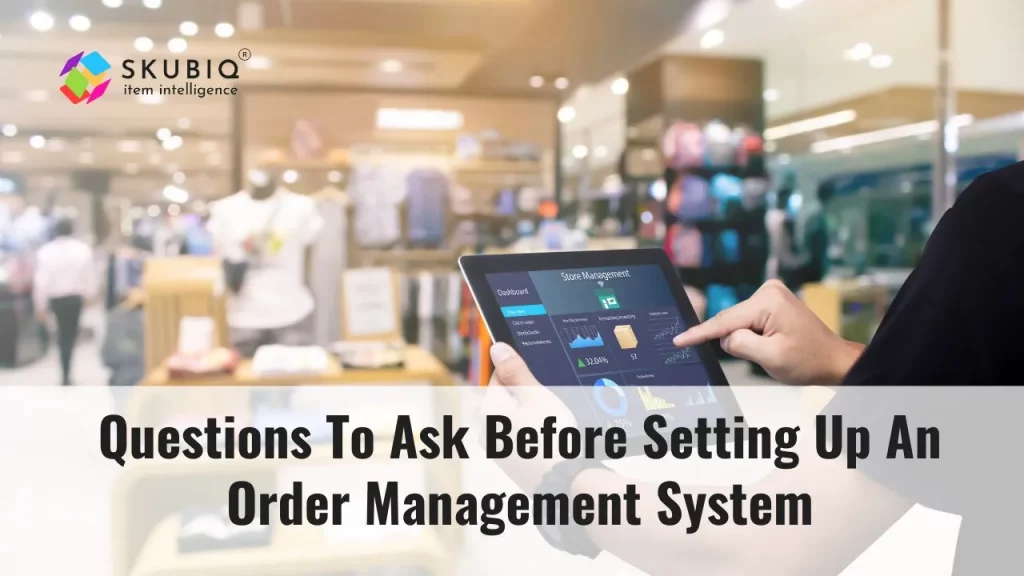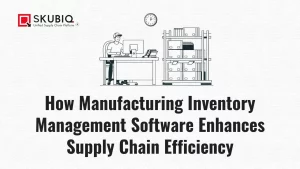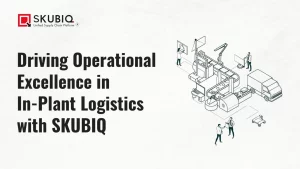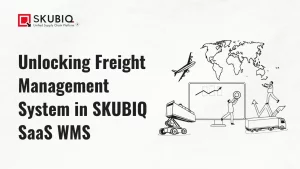Implementing an Order Management System (OMS) is a critical decision for any business, as it can significantly impact efficiency, customer satisfaction, and overall operations. Before diving into the setup process, it’s essential to ask the right questions to ensure you choose the best system for your needs. In this comprehensive guide, we will explore key questions that will help you make an informed decision.
Understanding Your Business Needs
1. What Are Our Current Pain Points?
Before selecting an OMS, identify the specific challenges your business faces with its current order management process. Are there frequent errors in order processing? Is inventory management inefficient? Understanding these pain points will help you choose a system that addresses your specific needs.
2. What Are Our Growth Projections?
Consider your business’s growth trajectory. If you expect significant growth, ensure the OMS you choose can scale accordingly. A system that works for your current size might not be sufficient as your business expands.
3. What Are Our Industry Requirements?
Different industries have unique order management requirements. For instance, a retail business might need robust inventory tracking, while a B2B company might require complex order workflows. Understanding these requirements will help you select an OMS tailored to your industry.
Evaluating System Features
1. Does It Support Multiple Sales Channels?
In today’s multi-channel environment, it’s crucial that your OMS can integrate with various sales channels such as online stores, physical retail locations, and marketplaces like Amazon and eBay. This ensures seamless order management across all platforms.
2. What Are the Inventory Management Capabilities?
Effective inventory management is a cornerstone of a good OMS. Ensure the system offers features like real-time inventory tracking, automated stock replenishment, and inventory forecasting.
3. Is It Compatible with Our Existing Systems?
Your OMS should integrate seamlessly with your existing systems such as ERP, CRM, and accounting software. This integration is vital for ensuring data consistency and avoiding siloed information.
Considering User Experience
1. Is the System User-Friendly?
A user-friendly OMS is essential for smooth adoption and effective use. Evaluate the system’s interface and usability. Can your team easily navigate and operate the system without extensive training?
2. What Kind of Training and Support Is Available?
Check what training resources and customer support are offered by the OMS provider. Comprehensive training and reliable support are crucial for overcoming initial hurdles and ensuring long-term success.
3. How Customizable Is the System?
Every business has unique needs. Assess how customizable the OMS is. Can it be tailored to fit your specific workflows and processes? Flexibility in customization can significantly enhance the system’s effectiveness.
Analyzing Costs and ROI
1. What Are the Upfront and Ongoing Costs?
Understand the total cost of ownership for the OMS. This includes upfront costs for system setup and ongoing costs such as subscription fees, maintenance, and upgrades. Ensure the costs align with your budget.
2. What Is the Expected ROI?
Evaluate the potential return on investment (ROI). How will the OMS improve efficiency, reduce errors, and enhance customer satisfaction? Understanding the ROI will help justify the investment.
3. Are There Any Hidden Fees?
Be aware of any hidden fees that might not be apparent upfront. These could include costs for additional users, integration with other systems, or premium support services.
Assessing Security and Compliance
1. How Secure Is the System?
Security is paramount when handling sensitive customer and business data. Ensure the OMS provider follows best practices for data security, including encryption, regular security audits, and compliance with relevant regulations.
2. Does It Comply with Industry Standards?
Check if the OMS complies with industry standards and regulations, such as GDPR for data protection or PCI DSS for handling payment information. Compliance is essential to avoid legal issues and protect customer data.
3. What Is the Data Backup and Recovery Plan?
Understand the OMS provider’s data backup and recovery plan. This is crucial for ensuring business continuity in case of data loss or system failure.
Exploring Scalability and Flexibility
1. Can the System Scale with Our Business?
Ensure the OMS can scale with your business as it grows. This includes handling increased order volumes, adding new sales channels, and accommodating more users without compromising performance.
2. Is It Flexible Enough to Adapt to Changes?
Your business needs might change over time. Assess whether the OMS is flexible enough to adapt to new processes, technologies, and market conditions.
3. Does It Support Mobile and Remote Access?
In today’s digital age, having mobile and remote access to your OMS is essential. Ensure the system supports access from various devices and locations, enabling your team to manage orders anytime, anywhere.
Evaluating Vendor Reputation
1. What Is the Vendor’s Track Record?
Research the vendor’s track record. How long have they been in business? Do they have a history of successfully implementing OMS solutions for businesses similar to yours?
2. Are There Positive Customer Reviews and Testimonials?
Look for customer reviews and testimonials to gauge the vendor’s reputation. Positive feedback from other businesses can provide confidence in the vendor’s reliability and service quality.
3. What Is Their Roadmap for Future Development?
Understand the vendor’s roadmap for future development. Are they committed to continuous improvement and innovation? A vendor with a clear vision for the future is more likely to provide a system that evolves with your business needs.
Integration and Implementation
1. What Is the Implementation Timeline?
Discuss the implementation timeline with the vendor. How long will it take to get the OMS up and running? Ensure the timeline aligns with your business’s schedule and operational needs.
2. How Easy Is the Integration Process?
Evaluate the integration process. Is it straightforward, or does it require significant time and resources? A smooth integration process is essential for minimizing disruptions to your operations.
3. What Support Is Available During Implementation?
Check what support the vendor offers during the implementation phase. Dedicated support during this critical period can help address any issues quickly and ensure a successful rollout.
Post-Implementation Considerations
1. What Training Is Provided for Our Team?
Effective training is crucial for ensuring your team can use the OMS efficiently. Ensure the vendor provides comprehensive training resources, including manuals, tutorials, and live support.
2. How Will Performance Be Monitored?
Establish a plan for monitoring the OMS’s performance post-implementation. Regular performance reviews will help identify any issues early and ensure the system continues to meet your business needs.
3. What Ongoing Support and Maintenance Are Available?
Understand the ongoing support and maintenance services provided by the vendor. Regular updates, troubleshooting support, and maintenance services are essential for keeping the OMS running smoothly.
Conclusion
Choosing the right Order Management System is a significant decision that requires careful consideration. By asking these critical questions, you can ensure you select an OMS that meets your business’s unique needs, supports your growth, and enhances your overall efficiency. Thorough research and thoughtful planning will help you implement a system that drives success and customer satisfaction.



